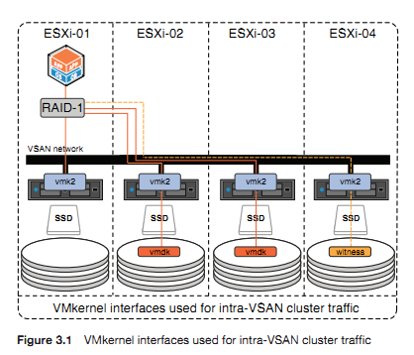Cookie giúp chúng tôi cung cấp các dịch vụ của mình. Đồng nghĩa với việc sử dụng được dịch vụ của chúng tôi, Bạn đồng ý với việc sử dụng cookie của chúng tôi ?
Bạn không có sản phẩm nào trong giỏ hàng của bạn.
Sản phẩm đã xem gần đây
Các sản phẩm được gắn thẻ 'vmware vsphere'
Using VMware Workstation Pro 16.0
Introduction and System Requirements:
Host computers that run Workstation Pro must meet specific hardware and software
requirements. Virtual machines that run in Workstation Pro support specific devices and provide
certain features.
This chapter includes the following topics:
- Host System Requirements for Workstation Pro
- Virtual Machine Features and Specifications
$0.00
vCenter Server HA Performance And Best Practices 6.5
VMware vSphere® is a virtualization platform that forms the foundation for building and managing an
organization's virtual, public, and private cloud infrastructures. VMware vCenter® Server Appliance™ (vCSA) sits
at the heart of vSphere and provides services to manage various components of a virtual infrastructure like ESXi
hosts, virtual machines, and storage and networking resources. As large virtual infrastructures are built using
vSphere, vCenter Server becomes an important element in ensuring the business continuity of an organization.
vCenter Server must protect itself from a set of hardware and software failures in an environment and must
recover transparently from such failures. vSphere 6.5 provides a high availability solution for vCenter Server,
known as vCenter Server High Availability, or VCHA.
This paper shows:
• VCHA performance characterization: A preliminary performance evaluation of the VCHA feature.
• VCHA best practices: Some guidelines for VCHA deployment and configuration.
$33.99
$12.99
VMware vSAN 6.7 U1 Deep Dive
Cormac Hogan is a Chief Technologist in the Office of the CTO in the Storage and Availability business unit at VMware. Cormac was one of the first
VMware employees at the EMEA headquarters in Cork, Ireland, back in 2005, and has previously held roles in VMware’s Technical Marketing,
Integration Engineering and Support organizations. Cormac has written a number of storage-related white papers and has given numerous presentations on
storage best practices and new features. Cormac is the owner of CormacHogan.com, a blog site dedicated to storage and virtualization. He can be followed
on twitter @CormacJHogan.
Duncan Epping is a Chief Technologist working for VMware in the Office of CTO of the Storage and Availability business unit. Duncan is responsible
for ensuring VMware’s future innovations align with essential customer needs, translating customer problems to opportunities and function as the global
lead evangelist for Storage and Availability. Duncan is the owner of VMware Virtualization blog Yellow-Bricks.com and has various books on the topic of
VMware including the “vSphere Clustering Deep Dive” series. He can be followed on twitter @DuncanYB.
Acknowledgements
We would like to thank our VMware management team, Christos Karamanolis and Yanbing Li, for supporting us on this project. A special thanks goes out
to our technical reviewers from VMware: Frank Denneman and Pete Koehler. Thanks for keeping us honest and contributing to this book.
Lastly, we would like to thank everyone who has been supporting us by buying this book, attending our sessions at VMUGs/VMworld, and visiting our
blogs. We truly appreciate it
$25.96
$9.99
VMware vSphere 6.7 Clustering Deep Dive
The realm of technology is one that has traditionally been constructed on silos. We tend to fragment our skills into very specific areas of expertise, even going so far as to isolate the very people who run data center and
cloud operations into little buckets of focus and energy. I’d like to think that this, more than anything, was the root cause for such painfully slow progress towards realizing the dream of a fully software defined data center. I had always felt a bit stifled by this organizational fragmentation and thirsted for a way to put my hands on just about any solution that shows the promise of removing the burden of manual processes. Since you’re reading this book, I’ll make the assumption that you have had similar thoughts.
$39.95
$9.99
VMware vSphere Performance 6.5: Designing CPU, Memory, Storage, and Networking for Performance-Intensive Workloads
It’s hard to believe how far we’ve come in the virtualization industry. What was once considered
a niche technology used only for development and testing is now used for production work-
loads and even business-critical applications. The VMware vSphere platform is capable of sup-
porting nearly any virtualized workload with very few obstacles standing in the way of close to
100 percent virtualization.
Today’s workloads are more demanding than ever before. Email servers frequently require
large amounts of memory and CPU resources in order to handle the large volume of email that
we all deal with on a daily basis. Database servers often require large amounts of memory and
storage resources, from a capacity perspective as well as performance, to meet the demands of
a business. And newer technologies, such as virtual desktop infrastructure (VDI), have intro-
duced signii cant demand for resources in vSphere environments.
$32.49
$16.25







